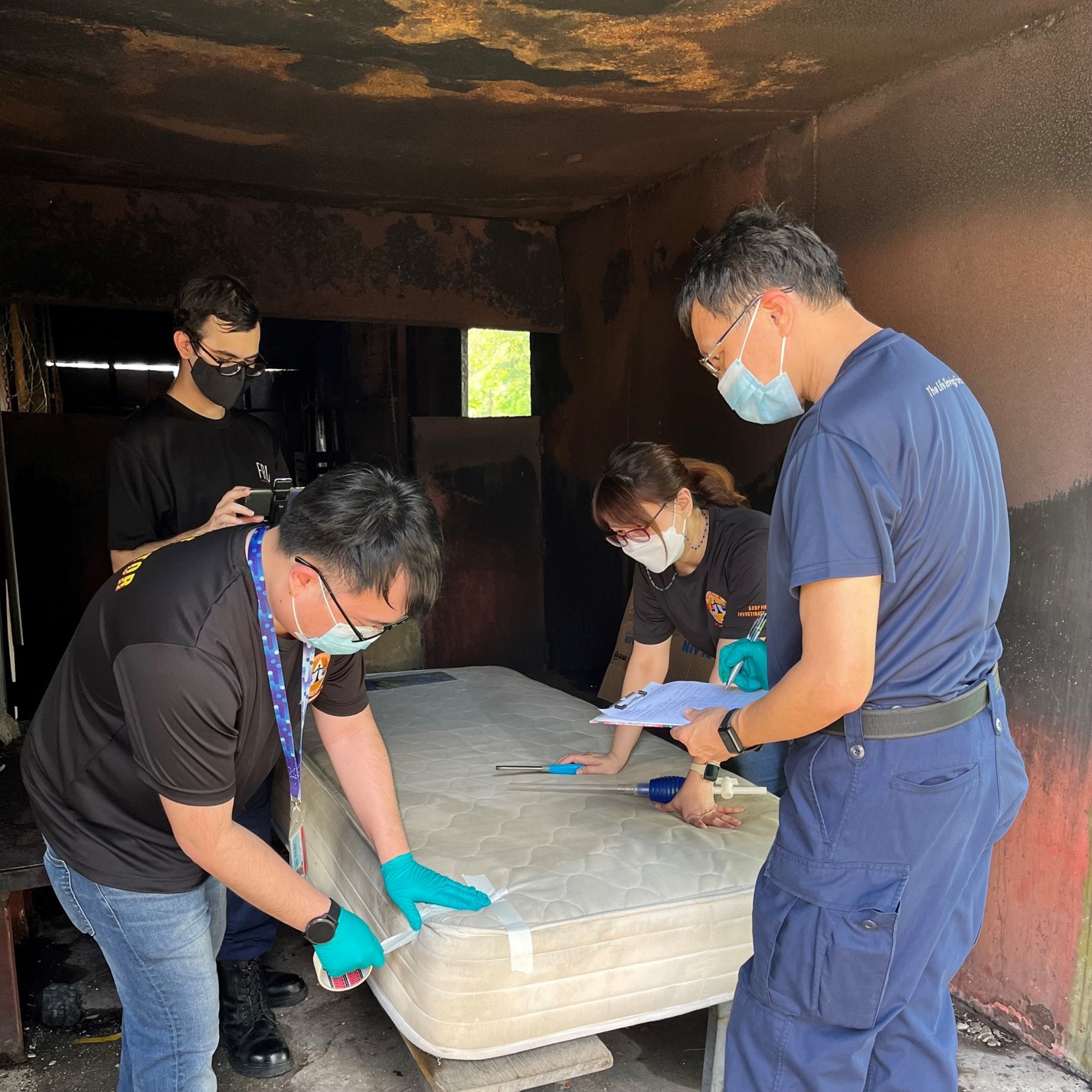Through ground observations and fire investigation findings, we learnt that the mulch layer, which typically consists of recycled horticulture materials on top of the soil, used on the vegetation stretch along the road dividers was the primary fire load in most of the cases.
Q: Why did the team suspect mulch as a possible cause for the fires?
Through ground observations and fire investigation findings, we learnt that the mulch layer, which typically consists of recycled horticulture materials on top of the soil, used on the vegetation stretch along the road dividers was the primary fire load in most of the cases. The type of mulch used on stretches of the expressway with a higher frequency of vegetation fires could potentially be more combustible than mulches located elsewhere.
To study the burn behaviours of different mulch materials and the factors influencing their ignitability, we took a three-pronged approach comprising (a) laboratory tests conducted by HTX and the Health Sciences Authority (HSA); (b) a trial using different types of mulches along the PIE; and (c) burn tests by the Fire Investigation and Research Laboratory (FIRL).
Q: What were some of the challenges you faced during the study and how did you overcome them?
One of the biggest challenges we faced was securing the necessary resources for this project, which included the procurement of raw materials during the onset of the COVID-19 pandemic. For example, many shops were closed due to the Circuit Breaker. I personally went down to multiple shops to purchase 154 flowerpots for the experiments. I can still vividly remember that I was only able to find a shop that had sufficient flowerpots after going to three different shops.
Another challenge was the inability to conduct face-to-face discussions or meetings during the Circuit Breaker, and our main form of communication was through Skype calls and emails.
During the course of this project, my boss’ (SCDF Major Tan Kim Haw) support as a great listener and advisor, coupled with a resilient can-do attitude was paramount for me to overcome all the challenges.
Q: What were some of the measures taken following the findings from the study?
After a review, NParks and NEA revised the specifications for mulch along expressways during routine maintenance. Regular cleaning and preventive watering at hotspots during dry periods were also carried out.
After various initiatives were implemented, there was a significant drop in the number of road divider vegetation fires from 213 cases in 2019 to 20 cases in 2021 up till end May. However, it is plausible that other external factors could have contributed to this decrease as well.
Q: What's next for you? What other mysteries are you looking to solve?
The study on reducing road divider vegetation fires has been a fruitful one. We are currently working on mattress fires caused by cigarettes and are trying to understand the burn behaviour of cigarettes on mattresses. The knowledge gained from this ongoing study will certainly be useful to our fire investigators in their investigations and we hope that our findings can help to reduce such incidents in the future.
 The FIU team conducting a burn experiment on a mattress (Photo: HTX)
The FIU team conducting a burn experiment on a mattress (Photo: HTX)
Q: What inspires you and what do you enjoy most about your work?
A sense of responsibility to keep Singapore a safe home for our loved ones and to always find innovative solutions to resolve any problem. Our case studies are always unique – from mulch, to the burning pattern of a mattress, to the flammability of colour powder. My work keeps me inspired to view things with different perspectives to appreciate different situations.
I enjoy the investigative and research aspects of my work. The incidents or scope of study are very relatable to our day-to-day life, and I find it meaningful that my work can contribute to society.
Read related article: (The Straits Times) Mystery of burning road dividers on PIE stretch solved after two years